- Home
- Encyclopedia
- Wyoming Becomes a State: The Constitutional Con...
Wyoming Becomes a State: The Constitutional Convention and Statehood Debates of 1889 and 1890 and Their Aftermath
Democrats and Republicans alike in Wyoming Territory agreed by the late 1880s that it was time their territory became a state. Statehood was attractive to the territory’s businessmen and politicians, as it offered them much more local control over land and water issues. Statehood would also mean the federal government would no longer pay the salaries of the top officials — but that savings mattered less as time went on.
One big obstacle loomed, however: were there enough people? Population had grown only slowly since the Territory was established in 1869. Congress used a general rule of thumb, dating back before the U.S. Constitution to the Northwest Ordinance, that a territory had to show a population of 60,000 people to qualify for statehood. Territorial Gov. Thomas Moonlight, a Democrat, reported in December 1888 that Wyoming had only 55,500 people.
Most people lived on ranches and in small towns. The major employers, however, were the railroads (by 1890, these were the Union Pacific, the Chicago, Burlington and Quincy and the Chicago and Northwestern) and the coal mines (many owned by the railroads). But the population remained small and scattered over the territory’s 98,000 square miles.
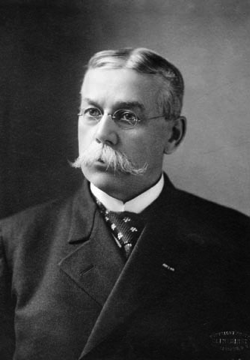
Cheyenne businessman and rancher Francis E. Warren, was appointed to a second stint as territorial governor in 1889, replacing Moonlight. Warren strongly supported statehood. The only officer elected territory-wide, Delegate to Congress Joseph M. Carey, also backed statehood. (Territorial governors and other top officials were appointed by the president. Territorial delegates to Congress could introduce legislation, but could not vote.) Carey argued that it was not unprecedented for territories with fewer than 60,000 people to be granted statehood. Warren, Carey and the others knew that, though Wyoming's 20-year-old experiment with votes for women would be controversial when the statehood question reached Congress, the population issue was more likely to cause problems.
When Congress did not act on Carey’s proposal for calling a Wyoming constitutional convention in 1889, presumably because of questions of population, Warren went ahead and set a date anyway for the election of delegates to a constitutional convention in Cheyenne. The election was called for July 8, 1889. Though women had full voting rights and rights to seek and hold office, not one ran for a delegate slot. The future state that had prided itself for being the first government to grant women equal political rights was to have a state constitution that was drafted, debated and passed entirely by men.
Constitutional Convention
Forty-nine of the 55 elected members assembled in Cheyenne in September 1889 to draft the Constitution. Four of the 49 did not sign the Constitution and attended only occasionally. Of those who did attend, 31 were Republicans and 18 were Democrats.
Warren emphasized the necessity for haste. In order for Wyoming’s request to be considered by Congress along with admission requests from neighboring states, a Wyoming statehood proposal would have to be introduced before the Congress ended its current session. That meant Wyoming citizens would have to vote on the Constitution at the November general election. Warren wanted their work done by the end of September—just 25 working days away.
Knowing their time was short, the delegates assembled a "scissors-and-paste” recapitulation of sections pulled from many other states. There were two major exceptions to that process, however—water and irrigation, and women’s rights.
Executive and judicial branches
Especially in fiscal matters, the delegates reflected the 19th century distrust of legislative power, and many of the 37 sections in the Declaration of Rights article likewise limited legislative power.
Likewise, the constitution explicitly states that the "executive power" of the state "shall be vested" in the governor, who "shall take care that the laws be faithfully executed." These seemingly broad powers, however, were limited. Most notable was creation of numerous boards, made up of the governor acting with the other four statewide elected officials, to administer many important state functions. (Other states had already adopted similar systems.) The constitution also provided that appointments to some other boards of citizen volunteers be made for terms longer than the governor’s. University of Wyoming trustees, for example, are appointed for six-year terms. The Constitution also allowed various boards and commissions to govern specific state agencies and even appoint the directors, taking that appointment power out of the governor's hands. Only government reorganization in the 1990s, more than 100 years later, finally made many of these formerly governing boards advisory only.
The Constitution provided for a four-year term for the governor with no restrictions on the number of terms a governor could serve. The legislature would need a 2/3 vote to override a gubernatorial veto. During the 16th day of the convention, delegate A. C. Campbell introduced an amendment attempting to make an override require only a simple majority, but his proposal failed.
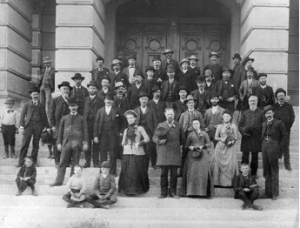
Some of the main debates were over what levels of population and assessed valuation should be sufficient to establish new counties. Some delegates argued it ought to be easy to create new counties, so that people wouldn’t have to travel great distances to do business at county seats. Others, however, saw danger in allowing new county formation too easily. New counties could drain off essential resources from older, established ones. Delegates compromised, allowing a relatively low threshold for county formation, but with the requirement that the old county from which the new one was carved would have to meet a specific threshold for assessed valuation, so that it would have sufficient financial resources to keep functioning.
On the very eve of adjournment, the question of county officers’ salaries consumed the session. Some delegates believed county officials would be more diligent if their pay was gained from a percentage of tax collected, from fees or other similar measure. The majority, however, favored salaries, set by the legislature.
Sorting out the judicial branch, delegates debated whether or not to have a supreme court separate from district courts. The three territorial justices "rode circuit” individually, sitting as trial judges and returning to Cheyenne to hear appeals as the supreme court. Many delegates, particularly non-lawyers, believed making two separate courts would be wasteful. In the opinion of several delegates, the district judges would conduct most of the work while the Supreme Court justices would be left with little to do. Lawyers, however, favored separate courts and managed to defeat an effort to retain the territorial system, but barely — 21 to 17.
Judges at all levels were to be elected to their offices. In 1972, the Constitution was amended to change that system dramatically, when the state adopted the "Missouri plan" of selection. A judicial nominating committee now accepts applications from Wyoming lawyers who have an interest in serving as a judge. The committee selects three names and forwards the names to the governor who then selects one to serve on the court until the next general election, when voters are given the option of voting to retain or not retain the judge for the entire term.
Legislative branch
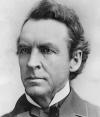
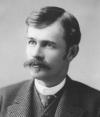
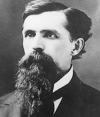
|
Legislative apportionment also consumed substantial delegate debate. The disagreements came with apportionment in the Senate. Delegates from the older established counties, along the southern tier on the main line of the Union Pacific Railroad, fought efforts by delegates from the smaller northern counties to follow a plan like the U.S. Constitution’s, with each county given an equal number of senators. Delegates from the Union Pacific-dominated southern Wyoming counties, led by Charles Potter and E. S. N. Morgan, both from Cheyenne, argued that the federal analogy was flawed. Counties have no independence; they are creations of the state — not at all like the states' relationship to the federal government. George Baxter, also from Cheyenne, pointed out that it would be as unfair to give each county a senator as it would be to demand that each county give the same contribution to the state's general fund.
If delegates from the southern counties had been uniformly in agreement, the issue would have been settled very quickly. But former Territorial Gov. John Hoyt and M. C. Brown, the president of the Constitutional Convention, broke with their southern colleagues. Both argued that a smaller Senate, constructed along federal lines, could serve as a check on the popular will in the lower house. Brown called the idea "the happiest compromise that ever came to man."
All along, the delegates opted for apportionment in the House to be based on population. Elections were to be at large in each county. Even the least populated county, therefore, would have at least one representative. (Not until the legislative reapportionment after the 1990 census — and a legal challenge — were legislators in Wyoming elected from single-member districts). On the 19th day of deliberations, the convention rejected the federal analogy by allocating more than one senator to more populous counties. The delegates, however, gave a sop to several northern counties in the form of one additional House member each. While the more populous counties gained greater representation in the Senate, arguably, a modified "federal" plan prevailed because at least one senator still was granted to each county — even to the least populated one.
The delegates seemed comfortable with retaining women’s suffrage by incorporating it into a provision of the Constitution, which flatly stated that equality would exist without reference to gender. For the majority of delegates, more specific language was not needed. The delegates did argue, however, about including literacy as a requirement for voting. One member argued that if a voter had to read in order to vote, most newcomers would be able to vote while old established ranchers, many of them war veterans who had been voting for many years, would be stripped of their voting rights. The entire article, incorporating equal rights and the much more debated requirement for literacy, passed by a vote of 30-12. Only one delegate, Louis J. Palmer, an Illinois-born lawyer and Democrat from Sweetwater County, flatly stated opposition to women’s suffrage.
Coal
In the article on mining, however, women were barred from mining coal, after considerable debate. Finally, Alexander Sutherland, a Canadian-born Big Horn Basin rancher, noted that he had seen women working in the mines in Pennsylvania and said, "I hope we shall never see that in Wyoming." Women were constitutionally barred from coal mining until 1978.
Convention President M. C. Brown introduced an article that would have established a coal tonnage tax. Brown pointed out that the coal industry was making substantial profits as the companies (primary the Union Pacific Coal Company) removed more and more coal from the territory. Little of the coal was used within the borders of Wyoming. Brown argued that the state would be financially sound for years to come if a modest tax were assessed against every ton of coal shipped out of Wyoming. "Can they afford to pay out of that 75 cents [of clear profit] two and a half cents per ton?" he asked.
The measure passed initially. But soon afterward, C. D. Clark, a delegate from Uinta County and a lawyer for the Union Pacific, argued that if the state got revenues from every ton of coal mined, the result would be government waste, inefficiency and corruption. It would be preferable to keep government lean and honest, which could only be done, he said, if the tax on coal were not made part of the Constitution. The delegates reversed their earlier decision. Wyoming finally adopted a severance tax on coal, similar to Brown’s proposal, in 1969.
Revolutionary water law
While taxation of coal would have forever changed state funding, Wyoming's Article VIII, involving water and irrigation, was revolutionary. The constitution set up a complete system of water allocation, unique among states to that time, and firmly established the principle of state ownership of the resource.
Because of the declaration that the state owned all waters within its borders, the state could intervene as to issues of water. The most important figure in drafting the water and irrigation article was Dr. Elwood Mead, the territorial engineer with substantial experience in administering Wyoming’s territorial water laws as well as the laws in Colorado. Frustrated by endless court adjudications of water rights in Colorado, Mead advocated directing such controversies to the deliberations a group of individuals with real expertise in the subject — a state engineer and a board of control, made up of one superintendent for each of the state’s four main drainages — the Green, Platte, Wind/Bighorn, and Powder rivers. The engineer was president of the board; the board’s main job was to protect both private and state interests in water. The Constitution also set forth the principle that "beneficial use" determined the better water right, and no appropriation could be denied unless "demanded by the public interest."
Debates were long over questions of water and irrigation. And halfway through the convention, delegates adjourned for an entire afternoon to meet with the visiting U. S. Senate Committee on Arid Lands. Similarly the entire morning session of the 18th day involved a lengthy debate over the definition of "appropriation."
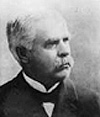
Two delegates were credited with the water article — J. A. Johnston, a Laramie County farmer (and manager of the biggest irrigation venture in the state, the Wyoming Development Company, in which both Warren and Carey had invested), and Charles H. Burritt, a Johnson County lawyer. Prominent as well was Territorial Engineer Mead, who was not a convention delegate but nonetheless played a strong advocacy role behind the scenes. Mead advocated adoption of the prior appropriation doctrine (already in operation, to some extent, in California and in Colorado where he had formerly served as assistant water engineer). During his term as territorial engineer, he had traveled throughout the territory urging support for his system as a means of fair allocation for everyone. Asbury B. Conaway, a former territorial court justice serving as a delegate from Sweetwater County, questioned if the Mead-inspired article changed the common law rule about riparian rights — that is, simple streamside rights — to water. Johnston and Charles Potter agreed it did. The rest of the delegates approved.
While prior appropriation and administrative control by experts seemed reasonable, more revolutionary was state ownership of all waters within the state, a move that continues to intrigue modern historians. Early in the debate, M. C. Brown pointed out that without state ownership, prior appropriators would not be subject to the Constitution. "It would be utterly impossible for the legislature, or any power of the state, to control, regulate, or in any manner interfere with its use." He concluded that "It is only by the declaration that we are to be the absolute owners of all the water that we may be enabled to control unreservedly the uses to which it may be put."
Later in the debates, Sheridan County Democrat Henry A. Coffeen questioned if the water appropriation was a move to enrich corporations. Republican Charles Burritt from neighboring Johnson County took issue with the insinuation. Such a connection "exists only in the very fertile imagination of the gentleman from Sheridan," Burritt said.
Contrary to Coffeen's suspicions, historian Don Pisani argues that the lack of big mining interests, the relatively ample supply of unappropriated water and the absence of large groups of farmers made the Wyoming article possible. Other historians argue that the water article came from the "cattle kings — early arrivals and earliest users of water who were confident such prior appropriation would ratify their holdings (and who were among those who established the Wyoming Development Company, noted earlier).
At the same time, state ownership of the water was not a threat to them because they also were certain they would control state government. But these interpretations do not account for the concern delegates had over rights of Wyoming cities to water. Delegates debated whether or not municipalities should have the power to appropriate water. The cities were given that power.

Mead was crucial to the debate and to the eventual adoption of the water and irrigation article. Delegates drew from his experience with water and his persuasive abilities to argue for a predictable, expert-driven means of determining rights. As Mead biographer James Kluger points out, Mead's ideas about water spread worldwide and the Wyoming convention gave him his first opportunity to articulate his water vision.
Throughout the wide-ranging convention discussions on the state's ownership of water, no mention was made of the rights of the earliest water users—the Native Americans. Though the tribes who had long used the lands that became Wyoming had not been irrigators, they had of course used the streams as they needed, and the 1868 treaty settling the Eastern Shoshone tribe on a reservation on the Wind River had mentioned water among the tribe’s resource rights. It was not until nearly 100 years after the constitution was adopted that Wyoming’s supreme court, later upheld by the U.S. Supreme Court, ruled that, independent of the state’s claim in 1890 to own all waters in Wyoming did not apply to the two tribes, Northern Arapaho and Eastern Shoshone, that ultimately settled on the reservation. Rather, the courts ruled, the earlier treaty with the federal government had given the tribes the best priority rights to most of the flow of the Wind River, if they could put it to use.
But even beyond natural resource issues (and except for language exempting Indians from state tax and implying they could not vote because they were not considered citizens, delegates to the Constitutional Convention made no other mention of the presence of native people within the state's borders.
The railroads
Except for their reversal on the coal tonnage tax, the delegates displayed their independence from the influence of the Union Pacific by passing several provisions controlling the way the railroad did business. One barred the railroad from by-passing an established community in order to set up a depot nearby. Another declared railroads common carriers and required them to "deal impartially with the public,” and to keep their rates fair.
When the delegates debated how the master-servant rule would be applied in Wyoming in order that employees would not be barred from collecting for damages resulting from the negligence of another employee, many delegates pointed out that there were other corporations besides the Union Pacific in Wyoming.
Nonetheless, most knew that when provisions were being offered to curb corporate power, the railroad stood to lose the most. The convention passed a section restricting the legislature from providing any form of financial aid for railroad construction. The delegates similarly debated a proposal that would restrict corporations to one line of business. Adopted by the convention, Article 10, Sec. 6 was amended in 1960 to loosen the requirement.
Labor

"Chinese labor" was debated extensively — whether or not the constitution ought to ban use of Chinese labor on public works projects. The proposal was introduced by Thomas R. Reid, a Democrat and Union Pacific railway worker from Cheyenne, a native of England who had emigrated to Wyoming as a young man from Australia. Some viewed the proposal as a dig at Warren for his actions four years earlier helping protect Chinese miners against white miners at Rock Springs, after the whites had rioted, killing 28 Chinese. The proposal demonstrated discrimination against Chinese labor de facto: "No person not a citizen of the United States or who has not declared his intention to become such, shall be employed upon or in connection with any state, county or municipal works or employment." The measure passed, with bipartisan support. (See article XIX, section 1 in the original constitution.)
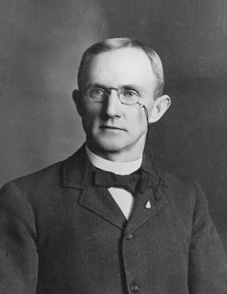
As a further measure of protection to the local workforce, the Constitution instituted the eight-hour day for miners. Another section forbade the importation of "private armies" into the state, clearly intended to prevent employers like the Union Pacific from importing Pinkerton agents to break labor strikes. The measure passed. Just three years later, however. stockmen raised such a private army to invade Johnson County and kill people they labeled rustlers. Two of the stockmen leading the invaders had been delegates to the Constitutional Convention--and had voted for the provision banning private armies.
Religion
The convention also showed skepticism of organized religion, and insisted on separation of church and state. Article 3, Sec. 36 asserts "No appropriation shall be made for charitable, industrial, educational or benevolent purposes to any person, corporation or community not under the absolute control of the state, nor to any denominational or sectarian institution or association." A similar provision in the Declaration of Rights states more directly, "No money of the state shall ever be given or appropriated to any sectarian or religious society or institution." During debate over requiring an oath for jurors, delegates made it clear that "belief or non-belief in God" ought to be no bar to service. The measures had near-unanimous and bipartisan support.
Political and sectional divisions
Republicans held a significant majority in the convention, but the convention did not divide along partisan lines. (U.S. Congressional Delegate Carey noted this fact in his speech to the Congress advocating admission in February 1890, and the fact is fairly clear from reading the convention proceedings). The real divisions appeared not between parties but between progressives and reformers versus conservatives, and between regions of the state. Though Mead’s successful proposals on water were part of a progressive policy outlook, some other ideas pushed by progressives failed. In addition to Brown's efforts at taxation of coal, for example, were a proposal from Delegate and University of Wyoming President John Hoyt to create a civil service for state employees. His recommendation was defeated by a substantial margin, however — 21-11. C. D. Clark, who had eloquently opposed the coal tonnage tax, also led opposition to the reform measure. Brown, Hoyt and Clark were all Republicans.
Sectional differences were particularly significant. Debates over legislative apportionment consumed substantial convention time. So did other issues dividing the earlier-populated, southern counties from the newly developing ones in the North. These divisions came up again over the question of where to locate state institutions. Delegates from the southern counties wanted the convention to ratify the territorial legislatures' designated locations of the already existing capital (Cheyenne), state "insane asylum" (Evanston), university (Laramie), and prison (Rawlins). Northern delegates, believing their region was about to experience population booms, disagreed. The convention struck a compromise. At an election to be held "no sooner than 10 years" after the passage of the Constitution, voters would decide the "permanent" locations of state institutions. During the interim, the institutions would be temporarily housed in the communities previously designated by the territorial legislatures.
In 1904, the election for the permanent locations finally was held. Laramie was the sole candidate for the university; Evanston, the state hospital; Rawlins, the state penitentiary. Cheyenne, however, was challenged by several cities for the capital.
The most serious competitor was Casper, founded in 1888 as a wool shipping point, but growing soon after into the center for oil exploration and development. It had the advantage of central location over Cheyenne, in the extreme southeast corner of the state. Centrally located Lander also got into the contest.
The election result gave Cheyenne more than 40 percent of the vote, but not the required 50 percent plus one, as designated in the constitution for permanent location. Consequently, Cheyenne remains, at least constitutionally, the "temporary" capital of the state.
The delegates never seriously questioned the declaration, included in the Constitution, that: "The people inhabiting this state do agree and declare that they forever disclaim all right and title to the unappropriated public lands lying within the boundaries thereof…" Yet, disregarding this language, so-called sagebrush rebels over the years have persisted in demanding that the federal government "return" all federal lands to the state.
Education
The delegates debated numerous education issues. Most significant was how state lands, held in trust for the benefit of the schools, would be sold or leased. Any sale had to be made at or above the appraisal value. All revenues from sale or rent of these lands went into a permanent school fund for the exclusive support of public schools.
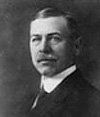
Delegates endorsed a provision barring the state superintendent or the legislature from choosing textbooks for use in schools. Charles Potter’s was the only recorded comment explaining the rationale: "I venture to say there is no more corruption than that which is caused where the prescribing of textbooks is left to the legislature."
The convention also debated how funding for schools could be fair to both small and large school districts. With the details left to the legislature, the convention concluded that baseline amounts should be allocated for each school, and after that, allocation of additional funds would depend on numbers of students. A property tax for support of public schools became a part of the Wyoming Constitution in 1948, and was amended in 1982. A series of Wyoming Supreme Court decisions in the 1990s, demanded equity in school funding statewide, and school-funding fairness continued to dominate legislative sessions in the late 1990s and early 2000s, more than a century after the convention met.

The convention also established a state university — already in existence in the Territory since 1886. The university was to be governed by a board, and "equally open to students of both sexes, irrespective of race or color…" The Constitution stated that the university would receive enough state funds to keep higher education "as nearly free as possible."
Finally, on the 25th day of the convention, the delegates voted on adoption of the entire document. The resolution passed 37-0. Later that day, 45 of the 55 elected delegates signed the document and adjourned, thereby sending it on the voters for approval.
Gov. Warren called a special election for Nov. 5, 1889. The Constitution passed overwhelmingly by a vote of 6,272 in favor to 1,903 against. The margin wasn’t a problem; the problem was the total number of voters.
Wyoming Statehood in the Congress
On March 26, 1890, Territorial Delegate to Congress Joseph M. Carey introduced a bill calling for statehood for Wyoming. (It was not the first, but other attempts had not gotten far.) For months before the special election, Carey had been telling colleagues that Wyoming's true population was far above the traditional 60,000-person statehood threshold. At one point, he estimated it as high as 125,000! Now he had to explain why, if the population was so great, so few people had voted in the special election.
Population is always hard to estimate, Carey said when he took to the floor of the House to advocate passage of the Wyoming Statehood Bill. As for the 60,000 threshold, at least seven states had been admitted with fewer people — and nearly all doubled in population in their first five years of statehood, he said. Wyoming, with "booms and immigration societies,” had increased steadily "in population and wealth” since establishment of the Territory, and no doubt would continue to do so, he said.
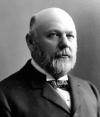
Carey went on to attribute the small turnout at the special election to lack of interest, saying "There is but little of politics in Wyoming. Every year is an off year …” He was confident turnouts would increase once the state was admitted to the Union. Geography was a problem too, he said. Accurate censuses and voter turnouts were both difficult for a population spread over 100,000 square miles.
Curiously, Carey made no mention in his speech of the women’s suffrage article, which some delegates to the Constitutional convention believed might have been harmful to gaining statehood. Still, numerous Democrats in the U.S. House spoke against admission of Wyoming—known to be leaning Republican. In the minority in the House, Democrats knew they’d be unable to block admission based on party affiliation alone—but they could argue against statehood for a Republican territory by attacking women’s suffrage. They made persistent objections to Wyoming's article 6 that granted women equal rights. It almost worked. The vote was very close. Wyoming statehood finally passed the House of Representatives, 139-127.

Warren and Carey both assured Wyomingites that the bill would pass the Senate within ten days. It didn’t happen that quickly, however, with prominent Senate Democrats continuing to question both the territory's population and its having allowed women the vote. (Women were not granted the vote in U.S. elections until 1920.) Finally, three months after House passage, Wyoming Statehood passed the Senate by a more comfortable 29-18 margin. President Harrison signed the Statehood Bill on July 10, 1890. Wyoming was the 44th state admitted to the Union.
Aftermath
When the 1890 census figures for Wyoming became available nearly two years after statehood, they showed 62,555 people, according to the official count of April 1890, two months after Carey's speech in the House. Ever since statehood, Wyoming has been last or close to last among the states in population. Only Nevada was smaller in the early 20th century; only Alaska, for one census in the middle of the century. Since statehood, government officials almost uniformly have called for economic diversification to increase the state's population and diminish the state's dependence on agriculture and natural resources. In the early 21st century, many residents of the state were comfortable with the small population and opposed promotional drives except for attracting tourists for temporary stays.
Many of the convention delegates, meanwhile. went on to long careers in Wyoming politics, Warren and Carey most prominent among them. Soon after statehood, the first Wyoming State Legislature sent Carey to the U. S. Senate. In November, 1890, Warren easily won the race for state governor, but abandoned that post two and a half months later when the Legislature sent him, too, to the Senate. Except for a two-year period, he remained in that chamber, and as a power in Wyoming politics, until his death in 1929.
In 1894, Warren managed to push his old friend Carey out of the Senate, and a 25-year feud between the two began. In 1910, Carey managed to gain the Democratic nomination for governor, beat the Warren-backed candidate and served for one term. Joseph Carey died in 1923, five years after the Warren machine ended the feud by nominating his son, Robert Carey, for the governorship.
C.D. Clark, the Union Pacific Railroad lawyer from Evanston who’d argued successfully against a coal tax, won election to the U. S. House of Representatives as Wyoming's only representative. Clark was later elected to the U. S. Senate; Henry Coffeen, to the U. S. House of Representatives.
Other delegates served as federal judges and judges on Wyoming’s Supreme Court and district courts. Hoyt, the UW President and former Territorial governor, and the delegate who drafted much of the education article, returned to the university presidency after statehood. Soon after, however, he was fired by the trustees over disagreements over administrative control. Two delegates, Charles Burdick and William Chaplin, were later elected secretary of state. Delegate DeForest Richards was serving as Wyoming governor at the time of his death in 1902.
Delegates W. C. Irvine, H. C. Teschemacher, and Charles Burritt were implicated on the side of the invaders in the Johnson County War in 1892.
The Wyoming Constitution, amended some 75 times since its adoption, remains generally similar to the document drafted in 1889. It is the 11th longest of any state constitution, much longer and more detailed than the United States Constitution and many other state constitutions. Major amendments have been made to articles on judicial selection and on public finance. An amendment was passed in 1974 making it difficult to adopt a state income tax; Wyoming remains one of seven states without an income tax. The first sales tax was authorized in 1935.
While gubernatorial power increased with government reorganization in the 1990s, the constitution continues to dilute the power of the chief executive by providing for such entities as thestate land board, which governs the revenue-raising measures and management of state lands and farm loans, and is made up of the governor and the other four statewide elected officials.
Since its adoption in 1889 and Wyoming statehood the following year, there has been no call for a second constitutional convention to replace the current version. Wyoming's constitution retains the outlines drawn for it by the drafters in 1889 and accepted by Congress the next year, when Wyoming became the 44th state.
Resources
Primary sources
- The account of the deliberations of the Constitutional Convention is drawn almost entirely from the printed proceedings: Journal and Debates of the Constitutional Convention of the State of Wyoming (Cheyenne: Daily Sun, Book and Job Printing, 1893).
- References to specific articles passed by the convention are from the convention files, held in the Wyoming State Archives, Cheyenne.
- Delegate Joseph M. Carey's remarks to Congress were made during deliberations over the Statehood Bill, H. R. 982, on March 26, 1890, and published in the Congressional Record 21, pp.2672-2683. Carey introduced H. R. 982 on Dec. 18, 1889. See Congressional Record, 21, p. 261.
- No definitive biography exists on Carey. While some of his papers are held in the collections of the Wyoming State Archives and some with family papers in the American Heritage Center, University of Wyoming, he apparently had many of them destroyed prior to his death. Biographical information in this article comes from the biography files for Carey in the collections of the American Heritage Center, University of Wyoming.
- For record of the debates on final passage of the Wyoming statehood bill in the U.S. House of Representatives House on March 26, 1890, see Congressional Record, 21, p. 2712; for passage in the Senate on June 27, 1890, Congressional Record, 21, p. 6589.
Secondary Sources
- Bakken, Gordon M, Rocky Mountain Constitution Making, 1850-1912. (New York: Greenwood Press, 1986). Excellent insights on the constitutional convention issues.
- Bowers, Carol, "Chinese Warren and the Rock Springs Massacre,” in Mike Mackey, ed., The Equality State: Essays on Intolerance and Inequality in Wyoming. (Powell: Western History Publications, 2000), pp. 37-62. An insightful view of Territorial Gov. F.E. Warren’s role in the aftermath of the Rock Springs massacre.
- Erwin, Marie, Wyoming Blue Book I, edited by Virginia Trenholm (Cheyenne: Wyoming State Archives and Historical Dept., 1974), 541-557. Includes biographical sketches of all delegates, with accompanying photographic portraits.
- Gould, Lewis L., Wyoming: A Political History, 1868-1896. (New Haven: Yale Univ. Press, 1968) A useful overview of politics of the period.
- Hansen, Matilda, Clear Use of Power: A Slice of Wyoming Political History (Laramie: Commentary Press, 2003). A recent description of the districting debate.
- Jackson, W. Turrentine. "Administration of Thomas Moonlight," Annals of Wyoming 18 (July 1946), 139-162. A good account of Moonlight's stormy term as territorial governor.
- Keiter, Robert, The Wyoming State Constitution: A Reference Guide. (New York: Greenwood Press, 1993). Good source for the origins of many of the articles in the Wyoming Constitution.
- Kluger, James, Turning on Water with a Shovel (Albuquerque: UNM Press, 1992).
- Morriss, Andrew P, "Wyoming Constitution, Article VIII," in Gordon Bakken, ed., Law in the Western United States. (Norman: University of Oklahoma Press, 2000), 168-169.
- O'Gara, Geoff, What You See in Clear Water: Life on the Wind River Reservation. (New York: A. A. Knopf, 2000). An in-depth account of the water-law controversy on Wind River.
- Pisani, Don, "Enterprise and Equity: A Critique of Western Water Law in the Nineteenth Century," Western Historical Quarterly 18 (1987), 15-37.
- Roberts, Phil, "A History of the Wyoming Sales Tax and How Lawmakers Chose It From Among Severance Taxes, an Income Tax, Gambling, and a Lottery,” Wyoming Law Review 4 (2004), 157-243.
Photo credits
- The photos of Warren, Baxter, Johnston, Morgan, Potter, Reid, Hoyt, Mead, and Carey, the two group photos on the capitol steps, and the photos of the capitol under construction and newly completed in 1890 are all from the Wyoming State Archives, with thanks. The photo of Old Main under construction at the University of Wyoming is from the American Heritage Center at UW, also with thanks.
